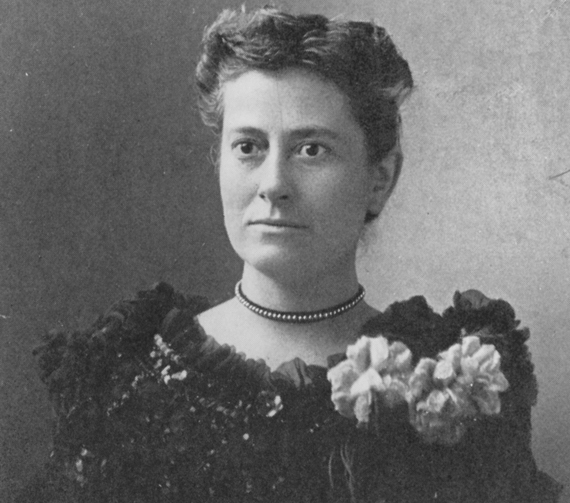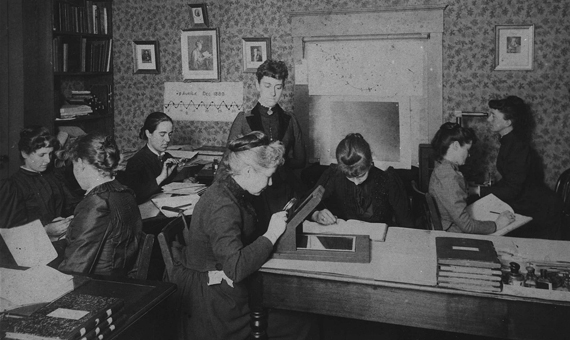Imagine exchanging your mop for the world of numbers, kitchen work for studying heavenly bodies, and housekeeping for scientific research. This would have been a none-too-popular choice among youths at the end of the nineteenth century, but it was a decision that would provide a great opportunity for a young woman who revolutionized astrophysics and discovered dozens of nebulae and hundreds of stars.

This was the case of Williamina Paton Stevens Fleming (1857 – 1911), a Scottish woman who, at the age of 19, left everything behind to start a new life with her husband in Boston, Massachusetts. Williamina Fleming was a teacher in Dundee, her native village on the east coast of Scotland, where she met the man who would become her husband, James Fleming, an accountant, a widower and 15 years older than her.
Two years after starting their adventure in the United States, Mr. Fleming abandoned the pregnant Williamina without any kind of support. But they say that when one door closes, another one opens, and so it was in this case. Alone and on another continent, she began looking for work as a maid to support her future child. No one would have suspected that this was her big chance.
It was just happenstance that brought this helpless mother and Professor Edward Charles Pickering together. Pickering, who had hired her to carry out household chores, was a professor of physics and the director of Harvard Observatory, leading an all-male team who helped him with routine calculations and administrative tasks. Being the keen observer that he was, he could appreciate from the first moment the great capabilities and intelligence shown by his new housekeeper, to the point that one of his most famous phrases was the one that he shouted at his team of assistants: “Even my maid could do a better job!”
A new catalogue of stars
After returning from Scotland, where she gave birth to her son Edward in 1881, Williamina began working with the “human calculator” at the observatory that Pickering ran, replacing the assistants who had generated so many headaches for the professor. Once there, she demonstrated her talent at working in the scientific field by identifying more than 10,000 stars and expanding the classification used at that time. She introduced a new organizational scheme based on 16 types, which assigned a letter to each star (from A to Q, skipping J) according to the amount of hydrogen that can be seen in its spectrum.
This work was published in 1890 in the first installment in the catalog of Henry Draper, which adopted the name of the person from whom the financing came, and would become one of the many contributions of Williamina Fleming to the field of astronomy. Although her name was not stated in the authorship of the study, Pickering cited her on the inside pages and publicly acknowledged that she was the creator of the new system. Fleming’s work is the basis of the spectral classification used today.
Harvard human computers
So pleasant was Pickering’s experience with his partner, that he hired a group of nine other women to help him perform calculations and sort the spectra on photographic plates. This group of female mathematicians passed into history as the “Harvard computers”, among which are found other relevant astronomers, such as Antonia C. Maury and Annie J. Cannon who reordered the spectral groups and classified a large number of stars.

Throughout her career, Williamina discovered 59 gaseous nebulae, over 310 variable stars, and 10 novae. One of her biggest achievements was the finding of the Horsehead Nebula in the constellation of Orion in 1888, which later became known as IC 434. She was named curator of the photographic collection of the Astronomical Observatory, honorary member of the Royal Astronomical Society of London and, shortly before her death, received the Guadalupe Almendaro medal from the Astronomical Society of Mexico.
In a world reigned by men, Williamina Fleming was able to overcome many obstacles and managed to occupy the place that belonged to her in the scientific field. This pioneering woman not only became a benchmark for millions of researchers, but also for the entire scientific community.
Comments on this publication